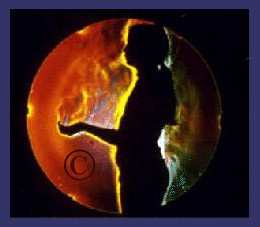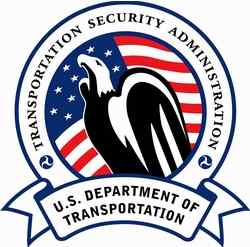"It's Probably DOA"
 Well, it looked good at
the time. In the latter part of 2004, the Transportation Safety
Administration unveiled what it called the "trace portal pilot
program" at select major airports across the nation. Quickly dubbed
the "puffer portal," it was designed to detect explosives at
airport checkpoints with, supposedly, amazing accuracy.
Well, it looked good at
the time. In the latter part of 2004, the Transportation Safety
Administration unveiled what it called the "trace portal pilot
program" at select major airports across the nation. Quickly dubbed
the "puffer portal," it was designed to detect explosives at
airport checkpoints with, supposedly, amazing accuracy.
The booth-like Explosives Detection Trace Portals deliver bursts
of air to the body to displace particulate matter it then analyzes
for traces of explosive materials. The machines were placed at John
F. Kennedy International, Boston Logan International, Los Angeles
International, Miami International, Newark Liberty International
Airport and San Francisco International.
"TSA is committed to using cutting-edge technology in the
defense of the nation," said Rear Adm. David M. Stone, USN (Ret.),
Assistant Secretary of Homeland Security for TSA in 2004.
"The deployment of this device marks one more successful step
toward achieving our goals of safety and security for America's
travelers."
It hasn't quite worked out that way. Several of the machines
have been experiencing consistent problems ranging from filter
trouble to just not working at all.
The machines at EWR are prone to false alarms and an inability
to reset properly, said an unidentified TSA supervisor. Repairs
that were made earlier this year do not appear to have remedied the
situation, according to the Seattle Times.
"We all laugh about it now because we never know if it's working
or not," said the supervisor, who requested to remain
anonymous.
Some critics say the $30 million program, with all its $160,000
devices, has pretty much failed.
According to a recent US Government
Accountability Office report not even 25 percent of the projected
434 machines have been distributed and put into service and there
has not been a deployment since last year. The report said the
reason was "performance and maintenance issues." The report further
stated "limited progress has been made in fielding explosives
detection technology at passenger screening checkpoints."
The TSA admits there are still problems to be rectified and
can't say when or if the program will continue, according to the
Times.
"TSA continues to work with the manufacturer on improving
maintenance elements of first-generation units," wrote TSA
spokesman Christopher White, in an e-mail response to The
Star-Ledger of Newark, NJ, about the program's status. "A timeline
has not been established for deploying additional trace
portals."
"Due to performance and maintenance issues, TSA halted the
acquisition and deployment of the [puff] portals in June 2006, and
the acquisition of additional portals is contingent on resolution
of these issues," the GAO report said.
 Mark Laustra, vice president
and general manager of homeland security for Smiths Detection,
manufacturer of the machines at EWR, said the company is improving
the filter problems as well as other issues.
Mark Laustra, vice president
and general manager of homeland security for Smiths Detection,
manufacturer of the machines at EWR, said the company is improving
the filter problems as well as other issues.
"We didn't understand the amount of dust and dirt that was in an
airport. The filter was getting clogged way too often," said
Laustra.
"It's probably DOA," said Mike Boyd, an aviation consultant and
TSA critic out of Denver, of the program. "This is another example
of them spending a lot of money on technology they're unsure of and
then mothballing [it]."
So, what is the TSA planning to do about the situation? White
refused to say what the agency has done make up for the puff portal
loss. "TSA has a layered approach to security," he said.
The TSA issued a news release in May, according to the Times,
announcing yet another pilot program that will test a hand-held
scanning device with "a technology capable of screening sealed
bottled liquids for explosives." EWR is one of about six airports
where the unit has been tested, according to TSA.
"Because the technology is performing well in pilot testing, TSA
anticipates deploying up to 200 bottled liquid scanners to the
nation's busiest airports by October," the agency said.
Steve Elson discovered major security lapses in the airport
security system well before 9/11 as a member of the FAA's Red Team.
He said he is hopeful for the new scanners.
But what does he think of the puff portals? "The idea is good --
but they have to work. That's the part they always miss at the
TSA," he said.
 ANN's Daily Aero-Term (04.20.24): Light Gun
ANN's Daily Aero-Term (04.20.24): Light Gun Aero-News: Quote of the Day (04.20.24)
Aero-News: Quote of the Day (04.20.24) ANN's Daily Aero-Linx (04.21.24)
ANN's Daily Aero-Linx (04.21.24) Aero-News: Quote of the Day (04.21.24)
Aero-News: Quote of the Day (04.21.24) ANN's Daily Aero-Term (04.21.24): Aircraft Conflict
ANN's Daily Aero-Term (04.21.24): Aircraft Conflict




